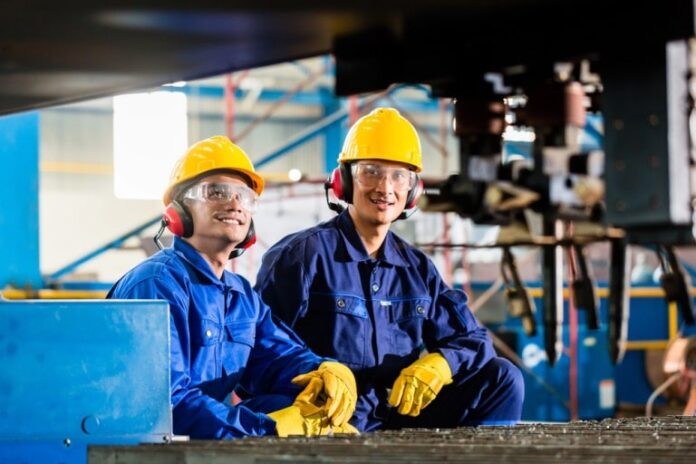In today’s fast-paced work environments, ensuring the safety of employees has become more complex and crucial than ever. Whether you manage an office, a construction site, or a team of remote workers, safety tools are essential to protect your most valuable asset: your employees.
By leveraging the right technology and practices, business owners can create a safer, more efficient workplace that fosters trust, productivity, and peace of mind. Below are some must-have tools every business should consider to ensure employee safety.
1. Workplace Safety Policies and Training Software
The foundation of any safe workplace is well-established policies and consistent training. Every business should implement safety protocols tailored to their specific industry. However, having policies alone isn’t enough. Employees need regular training to ensure they understand these protocols and how to react in emergencies.
Utilizing safety training software, such as Learning Management Systems (LMS), can help ensure that safety procedures are easily accessible and that training can be administered and tracked. This software allows for continuous updates and engagement, meaning employees can stay informed about new risks or regulatory changes without waiting for an annual review.
2. Incident Management Systems
No matter how many safety measures you put in place, incidents can still occur. An Incident Management System (IMS) can help businesses track, report, and analyze accidents or near-misses in the workplace. These systems streamline reporting and make it easier for managers to respond quickly and efficiently.
For business owners, these systems provide critical data that can reveal trends and problem areas, allowing you to take a proactive approach to preventing future incidents. More importantly, it helps you comply with regulations and ensure that all incidents are appropriately documented and resolved.
3. Lone Worker Safety Apps
For industries where employees often work alone, such as delivery drivers, field technicians, or remote workers, ensuring their safety requires special attention. Lone worker apps have become essential tools for businesses with off-site employees. These apps offer features such as GPS tracking, automatic check-ins, and panic buttons, which can alert a supervisor or emergency services if something goes wrong.
With real-time monitoring, business owners can ensure their employees are never entirely out of reach. This technology helps reduce the risks associated with working alone, such as accidents or sudden health issues, while providing peace of mind to both workers and management.
4. Emergency Communication Tools
During an emergency, communication is vital. Whether it’s a fire, severe weather, or a security threat, your business needs an efficient way to communicate with employees quickly. Mass notification systems allow businesses to send real-time alerts to employees, keeping them informed of potential hazards and providing instructions on how to stay safe.
These systems can be customized to alert specific teams or the entire organization, depending on the scope of the emergency. Integrating emergency communication tools with other systems, such as building alarms or safety apps, further strengthens your response strategy.
5. Personal Protective Equipment (PPE) Management
In industries such as construction, manufacturing, and healthcare, Personal Protective Equipment (PPE) is non-negotiable. However, managing PPE can be a challenge, particularly when it comes to ensuring that all employees are using the correct equipment for their tasks and that the equipment is in good condition.
PPE management software can simplify this process by tracking inventory, managing inspection schedules, and ensuring compliance with safety standards. Having the right tools in place to monitor PPE usage not only ensures worker safety but also helps avoid costly fines related to non-compliance with safety regulations.
6. Workplace Ergonomics Tools
Office workers may not face the same physical dangers as those in construction or manufacturing, but their safety is equally important. Poor ergonomics can lead to long-term injuries, such as repetitive strain injuries or back problems, which can significantly impact employee wellbeing and productivity.
Ergonomics tools, such as adjustable desks, monitor stands, and ergonomics assessment software, can help ensure that employees are working in safe and comfortable environments. Regular ergonomic assessments can also help identify areas for improvement, reducing the risk of injury and creating a more comfortable workspace.
7. Health Monitoring and Wearables
In industries where physical labor is common, health monitoring devices and wearables can be invaluable. These devices can monitor heart rate, body temperature, and even detect falls or excessive fatigue. In some cases, wearables can alert workers if they are exposed to dangerous levels of noise, heat, or toxic substances.
By using these tools, businesses can prevent accidents before they occur by identifying when a worker is overexerting themselves or when environmental conditions become unsafe. This proactive approach not only protects employees but also reduces downtime due to injuries.
8. Access Control and Visitor Management Systems
Maintaining control over who enters and exits your workplace is essential for ensuring the safety of your employees. Access control systems, which use keycards, biometrics, or mobile devices, allow businesses to monitor and restrict entry to certain areas, ensuring that only authorized personnel can access sensitive areas.
Additionally, visitor management systems track guests entering the workplace, providing a clear record of who was on-site in case of emergencies. These systems contribute to a secure environment by reducing the risk of unauthorized entry and ensuring that everyone in the building is accounted for in case of an evacuation.
Final Thoughts
Employee safety is a top priority for every business, but ensuring it requires the right tools and strategies. By investing in technologies like training software, incident management systems, and lone worker safety apps, business owners can create safer work environments and reduce the risk of accidents or injuries.
From offices to remote work sites, these tools provide comprehensive protection and peace of mind, allowing businesses to thrive while keeping their employees safe.
Ensuring safety isn’t just about compliance—it’s about creating a culture of care that fosters trust, loyalty, and long-term success.
